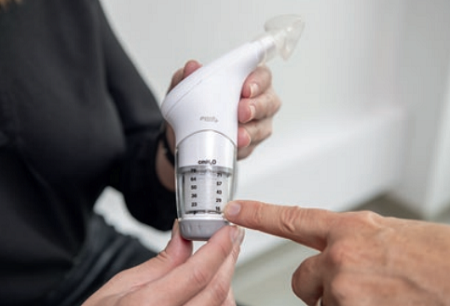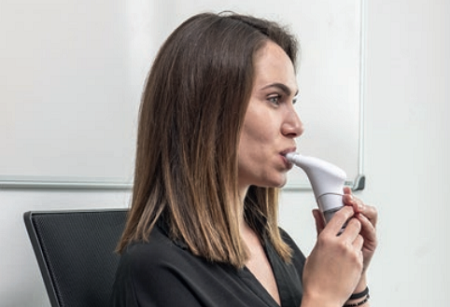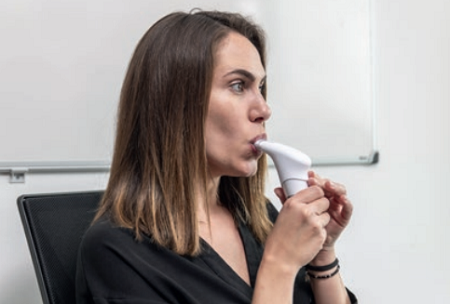
1. Préparez l’appareil en vissant la partie grise en bas et en commençant avec la résistance placée sur l’échelle selon la recommandation de l’infirmier ou infirmière RAC.
Whatever technique is selected, lung surgery is performed under general anesthesia. During a preliminary consultation, the anesthesiologist will give you information about this procedure along with an explanatory brochure. You must give him or her a list of the medications you are taking.
When a lung resection is planned, it is important to assess whether the volume of the remaining lung is sufficient to ensure good quality of life. For this purpose, one or more examinations may be requested:
Here are some tips for the best ways to prepare for your surgery and to reduce the risk of complications:

1. Préparez l’appareil en vissant la partie grise en bas et en commençant avec la résistance placée sur l’échelle selon la recommandation de l’infirmier ou infirmière RAC.

2. En position assise, installezvous bien droit, sans croiser les jambes, épaules relâchées et respirez normalement par la bouche.

3. Mettez l’embout dans la bouche et serrez bien les lèvres autour de l’embout afin qu’il n’y ait pas de fuites.

4. Videz les poumons tranquillement au maximum, puis aspirez par la bouche rapidement et énergiquement.
Télécharger le tableau pour noter vos résultats.
| Cotation | Perception |
| 0 | Rien du tout |
| 0.5 | Très très facile |
| 1 | Très facile |
| 2 | Facile |
| 3 | Moyen |
| 4 | Un peu difficile |
| 5 | Difficile |
| 6 | |
| 7 | Très difficile |
| 8 | |
| 9 | |
| 10 | Très très difficile |